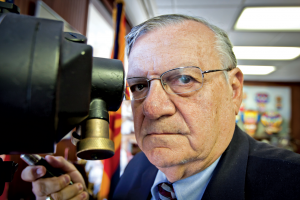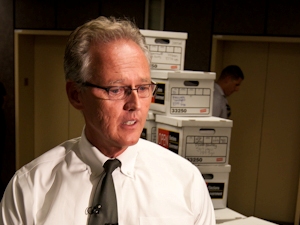The Arizona Capitol Times has long prided itself on cutting through the political spin and rhetoric to give its readers a look at the unvarnished truths of Arizona politics, be that at the Capitol, on the campaign trail or at the ballot box.
Beginning in this issue, we are tackling the truths of the ballot box in a series of stories that aim to dig into the election results and look at what the cold, hard numbers say about why certain candidates won and others lost.
Sifting through the more than 2.3 million votes cast in the Nov. 6 election to find meaningful patterns, correlations and explanations for why the races turned out the way they did is no easy task, and one we did not accomplish alone. This effort marks a collaboration with the Arizona Center for Investigative Reporting, an independent, nonprofit organization dedicated to accountability reporting in Arizona.
The analysis uses precinct-level election results, combined with demographic data from the U.S. Census Bureau, and is accompanied online by interactive maps that let you explore the analysis.
The early results have been nothing if not intriguing. This week’s issue features analyses of three races: the U.S. Senate contest between Jeff Flake and Richard Carmona, the U.S. House race between Kyrsten Sinema and Vernon Parker in the 9th Congressional District, and the U.S. House race between Ron Barber and Martha McSally in the 2nd Congressional District.
In Flake’s case, he won, but our analysis shows that he significantly underperformed in some key Republican areas across the state. Sinema pulled away from Parker in large part because she defeated him in nearly every one of the most competitive precincts in a district that was designed to be the most competitive in the state. And McSally nearly pulled off an upset of Barber by virtue of a polarized urban-rural divide in southern Arizona.
The analysis is all the more valuable in the wake of the first election since the decennial redistricting process that established untested political maps.
We hope you enjoy exploring the data as much as we did and we will have analyses of more races to publish in the coming weeks.
– Jim Small, Arizona News Service Editor
Vote analysis shows why Flake-Carmona race was so close
 Though he lost the U.S. Senate race to Jeff Flake, Richard Carmona won nearly all of the state’s most competitive voting precincts and performed better than most Democrats could hope to in conservative parts of Arizona.
Though he lost the U.S. Senate race to Jeff Flake, Richard Carmona won nearly all of the state’s most competitive voting precincts and performed better than most Democrats could hope to in conservative parts of Arizona.
Barber held seat by winning competitive precincts, making up ground in GOP areas
 Though U.S. Rep. Ron Barber won the election for Arizona’s 2nd Congressional District, Republican operatives have reasons to be hopeful in 2014 because of his narrow margin of victory and his loss in key precincts won by former U.S. Rep. Gabrielle Giffords.
Though U.S. Rep. Ron Barber won the election for Arizona’s 2nd Congressional District, Republican operatives have reasons to be hopeful in 2014 because of his narrow margin of victory and his loss in key precincts won by former U.S. Rep. Gabrielle Giffords.
Analysis reveals Sinema’s secrets to success in CD9
 When Arizona’s Independent Redistricting Commission finished redrawing the state’s political districts, it quickly became clear that none would be as watched as the new 9th Congressional District.
When Arizona’s Independent Redistricting Commission finished redrawing the state’s political districts, it quickly became clear that none would be as watched as the new 9th Congressional District.
And yet, while Democratic candidates were able to capture all three of the state’s competitive congressional districts in 2012, none won by as large a margin as Kyrsten Sinema did in CD9, defeating Republican Vernon Parker.
CD1 results reflect Kirkpatrick’s appeal, Paton’s weakness among Romney voters
 Precinct-level election results in Arizona’s 1st Congressional District suggest Democrat Ann Kirkpatrick’s return to Congress can be attributed to her connection to many key areas and to Republican Jonathan Paton’s lackluster ability to attract voters who supported the top-of-the-ticket Republican.
Precinct-level election results in Arizona’s 1st Congressional District suggest Democrat Ann Kirkpatrick’s return to Congress can be attributed to her connection to many key areas and to Republican Jonathan Paton’s lackluster ability to attract voters who supported the top-of-the-ticket Republican.
Support for Sheriff Arpaio declines even in some GOP strongholds
 While Joe Arpaio’s political dominance carried him to a sixth term as Maricopa County sheriff, his 2012 re-election reveals a geographically divided electorate and dwindling support among Republican-leaning suburbanites.
While Joe Arpaio’s political dominance carried him to a sixth term as Maricopa County sheriff, his 2012 re-election reveals a geographically divided electorate and dwindling support among Republican-leaning suburbanites.
Sales tax hike was squashed by enthusiastic opposition among GOP
 Proposition 204 promised to put increased funding into schools across the state by permanently extending a temporary 1-cent sales tax that dedicated the revenue to education. But strong support for the tax when voters approved it in 2010 fractured in 2012, revealing a partisan divide.
Proposition 204 promised to put increased funding into schools across the state by permanently extending a temporary 1-cent sales tax that dedicated the revenue to education. But strong support for the tax when voters approved it in 2010 fractured in 2012, revealing a partisan divide.
Failed top-two primary measure had most support among independent voters
 Had voters passed the Open Elections/Open Government measure, proponents argued that the result would have been less-radical ideologues being elected and a looser grip by political parties on elected offices.
Had voters passed the Open Elections/Open Government measure, proponents argued that the result would have been less-radical ideologues being elected and a looser grip by political parties on elected offices.
Art of the single shot: How less can mean more when voters get to choose two
 At first glance it might make sense for the two main political parties to fight over every seat possible.
At first glance it might make sense for the two main political parties to fight over every seat possible.
But when it comes to Arizona’s House of Representatives, where voters elect two candidates to represent each district, a more tactful approach can sometimes pay off.
Colorado City shows bizarre voting trends
 Nearly every person in Arizona who voted in the 2012 election cast a ballot for some presidential candidate, whether Mitt Romney, Barack Obama or some other candidate — except in the polygamist community of Colorado City.
Nearly every person in Arizona who voted in the 2012 election cast a ballot for some presidential candidate, whether Mitt Romney, Barack Obama or some other candidate — except in the polygamist community of Colorado City.
Analysis shows Lewis fell short in appealing to Hispanics
 Jerry Lewis, the Republican who rose to fame by defeating Russell Pearce two years ago, lost his Senate seat in 2012 partly because his crossover appeal to Latinos did not translate into votes for him, an analysis of the results of the November elections showed.
Jerry Lewis, the Republican who rose to fame by defeating Russell Pearce two years ago, lost his Senate seat in 2012 partly because his crossover appeal to Latinos did not translate into votes for him, an analysis of the results of the November elections showed.
Democrats, Republicans find good news in Corporation Commission races
 Races for the Arizona Corporation Commission typically get less attention than the body’s utility-regulating powers perhaps warrant, but many in the elections business say the details of the outcomes can be highly valuable.
Races for the Arizona Corporation Commission typically get less attention than the body’s utility-regulating powers perhaps warrant, but many in the elections business say the details of the outcomes can be highly valuable.


































